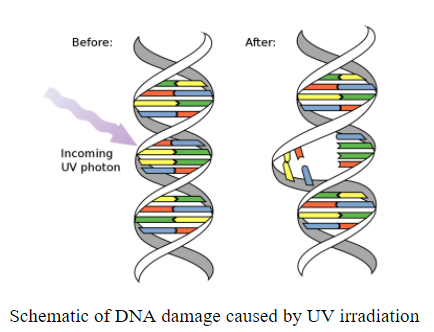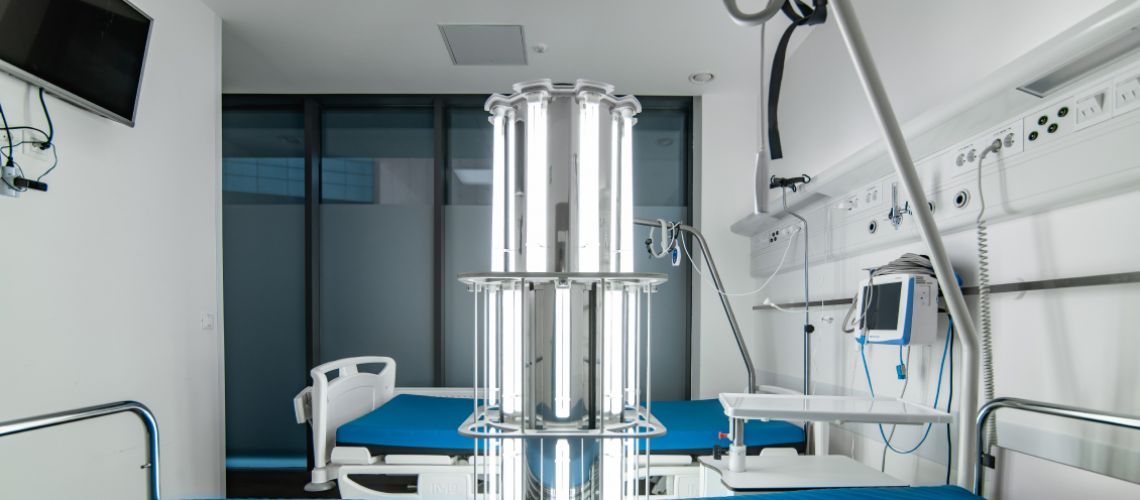The hospital-wide Reduction in Superbugs by UV-C Light

What is UV-C light?
UV-C light also called UV-C disinfectant or germicidal UV, is a powerful disinfection tool against many viruses, bacteria, and mold, with the superbugs variants not spared. The use of UV-C light as a disinfectant offers hope in infection control, as it offers close to 99% effectiveness.
Also, this virus killer, UV irradiation is one of the most effective and safest in sanitizing against the COVID19 coronary virus, the causal organism of the COVID19 pandemic. The use of UV-C light is not limited to eradicating superbugs some of which colonize surfaces in the hospitals, it is used in disinfecting air, sterilizing water, and surgical instruments. The germicidal effect of UV-C light is procured by its ability to destroy the DNA and RNA of bacteria and viruses, thus inactivating them, reducing their ability to reproduce and their infectivity.
What are DNA and RNA? They are the genetic makeup of an organism.
UV-C light at a wavelength of 200 -280nm has mutagenic effects on the pyrimidine residues of DNA and RNA. It causes breakage of these residues, thereafter leads to the formation of pyrimidine-dimer. This genetic damage makes the cell non-viable.
A study conducted by Duke University found that the addition of UV-C light to standard room cleaning procedures in hospitals led to a moderate reduction in the incidence of two common healthcare-associated infections.
The randomized controlled clinical trial conducted across 9 hospitals in the south-eastern United States studied the effect of terminal room disinfection with UV-C in a subset of rooms previously occupied by patients infected or colonized by multidrug-resistant (MDR) organisms, on the hospital-wide incidence of Clostridium difficile and vancomycin-resistant Enterococci (VRE).
This study is a secondary analysis of a 2017 study that reported a decrease in risk of multi-drug resistant (MDR) infections causing agents including; Clostridium difficile,Vancomycin-Resistant Enterococci (VRE), Carbapenems Resistant Acinetobacter, Methicillin Resistant Staphylococcus aureus (MSRA), Extended Spectrum B-lactamase producing Pseudomonas, Multi-Drug Resistant Mycobacterium
Method of Study
A cluster-randomized trial that studied the effect of 4 different strategies of terminal disinfection of rooms previously occupied by patients with cases of known or suspected infection with Clostridium difficile, VRE, methicillin-resistant Staphylococcus aureus (MRSA), or multidrug-resistant Acinetobacter spp.
Strategies;
- Standard disinfection with quaternary ammonium (except for C difficile, in which bleach was used)
- Standard disinfection and disinfecting UV-C
- Bleach
- Bleach and UV-C
The incidence of MDR infections is expressed as the number of patients with MDR infections per 10,000 patient-days).
Result of Study
- In all the enhanced cleaning methods, the UV-C study period demonstrated the greatest decrease in risk of getting infected by these superbugs.
- Relative risk reduction of 0.9 (incidence 17.2 per 10,000 patient-days vs. 18.1 per 10,000 patient-days) as compared with the reference period.
- The overall risk-reduction was primarily due to a reduction in C. difficile (incidence 9.13 per 10,000 patient-days vs 10.1 per 10,000 patient-days in the reference period); risk reduction of 0.97.
- VRE (3.23 per 10,000 patient-days vs 3.24 per 10,000 patient-days in the reference period) infections.
- UV-light and other enhanced cleaning methods did affect the incidence of MRSA and multidrug-resistant Acinetobacter but to a lesser amount.
The overall mechanism of reduction in hospital-acquired MDR infections can be explained in the following way, as thus;
- Reduction of the pathogen in target rooms decreases the probability of being infected or colonized during the future occupation of these rooms or adjacent rooms.
Other research testifies to the more than 40% reduction in transmission of these superbugs after terminal room disinfection using UV-C.
The SteriPro is the most effective UV-C disinfection robot on the market, this has been certified by different laboratories, including Microbium, an independent lab. Under laboratory conditions, SteriPro achieves 100% microbial reduction within a radius of 3 meters in less than 6 minutes and 99.9999% reduction in 21 minutes under variable room conditions. Regardless of the room condition, SteriPro radiates at an effective range of 6m using powerful 2000walts UV-C lamps.
The benefits of UV-C light can not be overemphasized as it requires minimum effort and it is time-saving. It is cost-effective, reduces stay at hospitals, reduces morbidity and mortality caused by MDR superbugs.
Reference:
Dall, Chris. “UV-Light Cleaning Shown to Cut Superbugs Hospital-Wide.” CIDRAP, 5 June 2018.
www.cidrap.umn.edu/news-perspective/2018/06/uv-light-cleaning-shown-cut-superbugs-hospital-wide.



